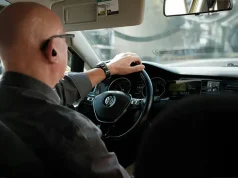
As an Australian traveller, experiencing Europe can be a dream come true. From the breathtaking architecture of Prague to the vibrant culture of Barcelona, there is no shortage of fantastic destinations to explore. But with so many options, it can be overwhelming to plan your trip.
By branching out beyond traditional tourist hotspots, Aussie travellers can discover hidden gems and create unforgettable memories in Europe. And by following these tips, Australians can have a smooth and memorable journey through Europe:
Organise Your Currency First
Planning a trip to Europe can be exciting and overwhelming, but one crucial step before setting off is organising your currency. While some countries in Europe may accept the Australian Dollar (AUD), it is important to note that most transactions will require Euros (EUR). It is recommended to exchange AUD for EUR before arriving, as conversion rates and fees at airports or foreign ATMs can often be more expensive.
These fees can also add up quickly if using credit or debit cards for purchases, so consider getting some cash in EUR beforehand to avoid excessive charges. Overall, organising your currency in advance can save time and help ensure a smooth and hassle-free trip through Europe. Along with stocking up on Euros, remember to have multiple methods of payment available such as credit or debit cards as well as travel cards for added security.
Purchase a Eurail Pass
For Aussie travellers heading to Europe, purchasing a Eurail Pass is a smart decision. Not only does it allow you to travel on almost all trains in Europe, it also offers convenience and flexibility with its range of passes and options. Plus, with discounts for youth and seniors, families have the opportunity to save money on their travels.
And even if you don’t intend on taking many trains, the pass can still prove useful as it grants discounts on ferries, buses, and other transportation options. So before you start booking individual train tickets or rental cars for your trip to Europe, consider the benefits of a Eurail Pass. It just might make all the difference in your journey.
Research the Visa Requirements for Each Country You Plan on Visiting
When planning international travel, it is important to do your research on visa requirements for each country you plan on visiting. As an Australian citizen, visiting Europe will typically require a Schengen visa. However, not all European countries are part of the Schengen agreement, so be sure to check the requirements for any non-Schengen countries on your itinerary as well.
It is also important to note that while a Schengen visa allows travel throughout the region within a certain time frame, certain types of visas may only grant access to specific countries or specific purposes such as education or work. Additionally, be sure to check and adhere to any entry requirements related to COVID-19, as these can vary greatly depending on the country and could potentially affect your ability to enter. When preparing your application, ensure that all necessary documentation, including onward ticket for visa, is ready in order to avoid any delays or issues.
Pack Appropriate Clothing
As any seasoned traveller knows, it’s important to be prepared for your destination’s climate and cultural norms. This becomes even more critical when travelling to Europe, as many attractions have strict dress codes in place. This means that shorts and tank tops may not be allowed inside churches or museums, so it’s best to pack clothing that covers your shoulders and knees.
In addition, some religious sites require visitors to cover their heads, so consider bringing a hat or scarf as well. While Europeans generally have a more fashion-forward sense of style, it’s still important to avoid overly revealing clothing in public places out of respect for local customs.
By packing appropriate clothing, you’ll not only be able to enjoy all the sites Europe has to offer, but also show appreciation for the unique cultures and traditions found there.
Download Some Free Translation Apps
As an Australian traveller heading to Europe, it’s important to consider the language barrier you may encounter. While many people in tourist hotspots may speak some English, venturing off the beaten path could leave you struggling to communicate. One solution is to download some free translation apps on your phone prior to your trip.
Popular options include Google Translate and iTranslate, both of which allow you to translate words or phrases in over 100 languages. These apps also have features such as camera translation and conversation mode, allowing for easy communication in real time. So before packing your bags and jetting off across the globe, don’t forget to add these helpful tools to your travel arsenal.
Interact With Locals in Addition to Seeing Major Tourist Attractions
As an Australian travelling to Europe, you may be tempted to check off all the major tourist attractions on your list. But don’t forget to also engage with locals during your travels. Immersing yourself in the community can give you a deeper understanding of the culture and customs of your destination.
Consider staying in a homestay or Airbnb instead of a hotel, joining a walking tour led by a local guide, or attending community events and festivals. Local interactions can also provide unique experiences that aren’t available through standard tourism – perhaps dining at an authentic neighbourhood eatery or learning how to make traditional handicrafts from a resident expert.
So while seeing famous landmarks is certainly worthwhile, remember to make connections with locals as well for a truly fulfilling trip.
_______
Australia may be a long way from Europe, but the continent offers Aussie travellers the opportunity to immerse themselves in unique cultures and breathtaking landscapes. To truly experience the best of what Europe has to offer, it’s worth considering a multi-country trip rather than focusing on just one destination.
Travel by rail or budget airline to visit must-see cities like London, Paris, and Rome, while also adding stops in smaller towns that are lesser known to tourists. Be sure to sample the local cuisine, attend live cultural events like festivals or concerts, and interact with locals in addition to seeing major tourist attractions.
Ultimately, travelling to Europe as an Aussie is about embracing new cultures and stepping outside of your comfort zone – whether it’s trying unfamiliar cuisines, interacting with locals, or visiting lesser-known destinations – in order to truly immerse yourself in the rich history and diversity the continent has to offer.





